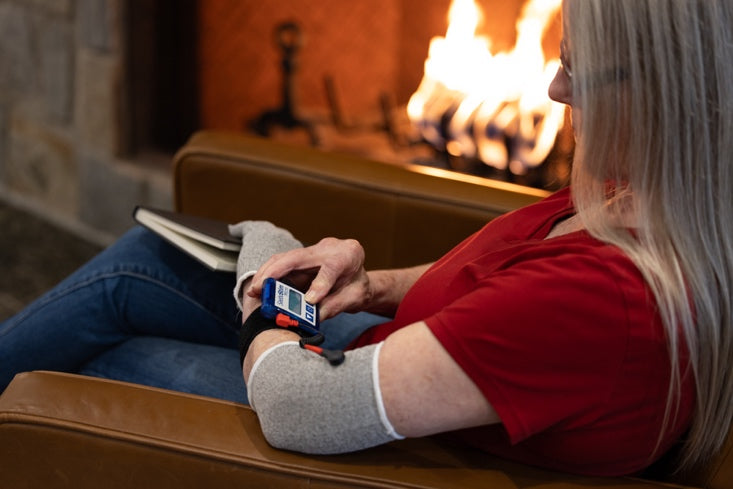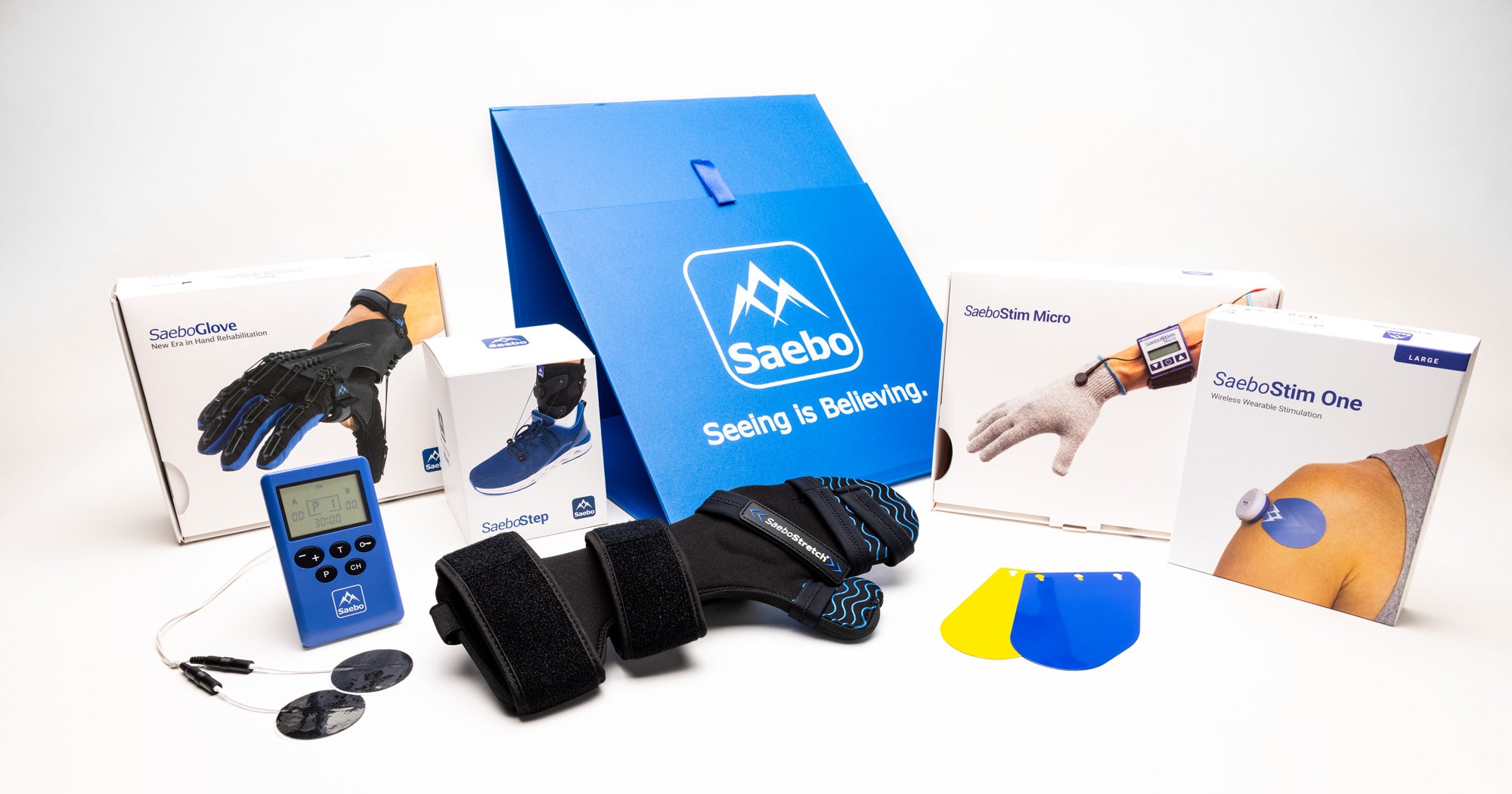Shoulder Subluxation After Stroke: Causes, Symptoms, and Effective Treatments

Shoulder subluxation after stroke is a common complication that can cause pain, weakness, and difficulty moving the arm—but with the right treatment and rehabilitation strategies, recovery is possible. As many as 80% of stroke survivors develop shoulder subluxation [1]. Although the high prevalence of shoulder pain following a CVA, this is an area of treatment that is often overlooked in early stages.
The upper arm bone (humerus) partially dislocates from the shoulder socket in shoulder subluxation. This condition causes more than just physical deformity—patients experience increasing levels of pain and limited function.
The rapid development of this condition raises serious concerns. Shoulder pain can start within two weeks after stroke, and the condition fully develops after 2-3 months. A 10-month follow-up study revealed worse shoulder stability in all but one of these patients over time [2].
Shoulder pain after post-stroke occurs because the muscles that normally stabilize the shoulder joint—especially the rotator cuff and deltoid—become weak or paralyzed due to damage in the brain’s motor cortex. This weakness, combined with the effects of gravity pulling on the arm, allows the head of the humerus to slip partially out of the glenoid socket.
In this piece, you'll learn about early symptoms of shoulder instability post-stroke, treatment options, passive and active exercises, scapular stabilization techniques, neuromuscular electrical stimulation (NMES), and supportive devices. Let's take a closer look at managing this challenging post-stroke complication effectively.
What is Shoulder Subluxation After Stroke?
The shoulder joint has a complex structure that makes it especially vulnerable after a cerebral vascular accident. We need to understand what happens during subluxation to help with proper rehabilitation and recovery.
Definition and How it is Different from Dislocation
Instability after stroke happens when the shoulder joint partially moves out of place. The humerus (upper arm bone) separates partially from the glenoid fossa (shoulder socket). This condition is not the same as a complete dislocation. A complete dislocation forces the humerus to exit the socket fully and needs immediate medical care. The humeral head still touches the glenoid fossa in subluxation cases.
Medical professionals can measure the severity by checking the gap size. A mild case shows a one-finger width separation, where larger gaps point to more severe cases. The humeral head can move in several directions—downward, forward (anterior), or backward (posterior). The direction depends on which muscles the stroke affects.
Why Stroke Survivors Face Higher Risk
Stroke can damage brain areas that control movement, especially the primary motor cortex. This damage results in weakness (hemiparesis) or paralysis (hemiplegia) on one side of the body. The shoulder joint trades stability for mobility and relies heavily on muscle support rather than bone structure.
Right after a neurologic injury, patients go through a flaccid stage. The rotator cuff muscles - mainly the supraspinatus along with the posterior deltoid—become weak. These muscles cannot keep the shoulder in proper position. The unsupported arm drops due to gravity, which makes the humeral head separate from the glenoid cavity.
Poor positioning and wrong handling during moves create more risk. Not supporting the arm properly in upright positions also increases the danger. Patients who have hemorrhagic strokes face higher risks than those with ischemic strokes [3].
Common Symptoms and Early Signs
You might notice these early warning signs-
- Visible gap between the acromion and humeral head
- Mild to moderate shoulder pain (though not always present)
- Stiffness and limited range of motion
- Shoulder instability and abnormal movement
- Changes in shoulder contour
Therapists check the glenohumeral joint by touch to find and measure severity. They often look at both shoulders and use finger width to measure how severe it is.
Quick detection plays a vital role due to the prevalence of subluxation in stroke survivors. Considering it may take a couple of weeks to develop, recognizing early signs is critical in starting a robust rehab program. The condition can get worse without proper care, which often slows down nerve recovery and rehabilitation progress.
What Causes Shoulder Subluxation in Stroke Patients
Along with the muscular weakness due to hemiplegia or hemiparesis post-stroke, there are additional factors that contribute to the severity and prevalence of subluxation.
Role of Gravity and Poor Positioning
Gravity becomes destructive when muscles cannot provide proper support. The arm's weight pulls down on the glenohumeral joint and gradually stretches the joint capsule. This gravitational force makes the humeral head "drop" lower in the socket.
There's another reason why an unstable shoulder gets worse:
- Poor positioning during sleep or sitting
- Traumatic pulling during transfers
- Lack of support when upright
- Weak trunk muscles cause slumped posture
These positioning problems increase the acromion-greater tuberosity (A-GT) distance, which helps measure subluxation severity.
Stages of Flaccidity and Spasticity
Recovery stages determine how subluxation presents itself. The original stage shows hypotonic muscles in most survivors. The shoulder muscles cannot anchor the humeral head during this phase. The trapezius and serratus anterior muscles weaken and cause downward rotation of the scapula.
Many patients develop spasticity as they recover, which causes abnormal increases in muscle tone. The pectoralis major, rhomboids, and latissimus dorsi become hypertonic during this spastic stage. Spasticity in internal rotation muscles (latissimus dorsi, pectoralis major, and subscapularis) can tilt the humeral head backward and result in posterior subluxation.
Shoulder subluxation usually develops within three weeks after stroke. Early intervention becomes vital to prevent long-term complications.
How to Assess a Subluxed Shoulder
Early detection is important to guide treatment, prevent pain, and support recovery. The following quick screening methods are commonly used at the bedside.
Fingerbreadth Method
- Patient seated, arm relaxed at side, thumb forward
- Palpate gap between acromion & humeral head
- Compare to unaffected side
- Grades: 0 = none → 5 = 2½ fingerbreadths
Sulcus Sign
- Arm relaxed, gently pull downward at elbow
- Watch for dimple (“sulcus”) under acromion
- Grades: I <1.5 cm | II 1.5–2 cm | III >2 cm
Effective Treatments for Shoulder Subluxation
Patients need a detailed rehabilitation plan that deals with both weak muscles and unstable joints to treat shoulder subluxation. Treatment options for post-stroke hemiplegic shoulders often include neurorehabilitation techniques, such as OT or PT interventions focused on shoulder strengthening after stroke, as well as implementing therapy devices in conjunction with exercise.
Passive Range of Motion Exercises
Stroke survivors with limited mobility benefit from passive range of motion exercises as early treatment, but it is essential to approximate the shoulder position prior to movement. A therapist moves the affected arm in different directions while the patient's muscles stay relaxed. The arm gets gentle stretches as the shoulder stays lined up properly. Patients can improve mobility by clasping their hands together and moving them across a table. These movements need careful attention because wrong techniques might make subluxation worse.
Scapular Stabilizing and Weight-Bearing Exercises
Shoulder blade muscles become stronger through scapular stabilizing exercises. Basic movements include shoulder shrugs, retraction or pulling shoulder blades back, and shoulder circles. Combining weight bearing in conjunction with scapular stabilizing exercises can increase patient involvement and awareness by applying an activity to the task. For example, leaning into the affected arm and retracting the hemiplegic shoulder while reaching is a great way to functionally involve the arm in early stages.
Active Movement Training and Task-Specific Rehab
Rehabilitation moves to active exercises when patients get stronger and can move their arm by themselves. Task-specific training uses everyday activities like reaching for objects or taking care of oneself. This method, where active involvement is required, encourages more brain plasticity through repeated practice. Research shows that active shoulder exercises with suspension systems reduce subluxation and improve body awareness [4].
Mobile Arm Supports - SaeboMAS
SaeboMAS uses springs that can be adjusted to counter gravity's pull on the weak arm. This "zero-gravity" device lets patients do useful tasks with minimal compensation. The system's tension changes as patients get stronger. Patients learn normal movement patterns again and become more independent in daily tasks like eating or grooming. Using a mobile arm support like the MAS not only allows patients to engage in increased level of activities, but it also reduces muscle strain allowing for increasing reps, furthering the effect of cortical remapping.
E-Stim for Shoulder Subluxation
Common stimulation techniques for shoulder instability following a stroke are use the of electrical stimulation. Commonly, NMES is used as this form of stimulation activates muscle and can help strengthen them. A great method for NMES in shoulder recovery is by placing it over the deltoid as it is a great proximal migrator TENS can be another effective method for assisting in the management of pain following a stroke, although not as effective as NMES in reducing the level of subluxation
Clinical Devices: SaeboStim Pro and One
- SaeboStim Pro: A versatile NMES/TENS unit that offers customizable settings, including triggered activation. Useful for both strengthening and pain management.
- SaeboStim One: A simpler, wearable NMES device designed for convenience—ideal for delivering prolonged, providing stimulation to shoulder muscles during daily activities.
A Note on Taping, Slings and Strapping
Taping, slings, and strapping are frequently used in rehabilitation to manage discomfort and support the shoulder—but it’s important to understand their role.
While these tools can provide short-term pain relief, improve posture, and help stabilize the joint, the research on their long-term effectiveness is limited. Key points include:
- Kinesiology tape may help reduce pain and improve proprioception, but it does not correct the underlying muscle weakness or prevent further subluxation.
- Slings can protect the hemiplegic shoulder during early recovery and reduce strain, yet prolonged use may contribute to stiffness or reduced functional use of the arm.
- Strapping or braces offer external support, but evidence is mixed on whether they prevent further subluxation or improve long-term function.
For people recovering from a stroke, these approaches are best used as part of a broader rehabilitation program, including targeted strengthening, functional exercises, use of NMES, utilizing mobile supports that allow functional movement like the SaeboMAS, along with targeted occupational or physical therapy.
Conclusion and Best Practices
Shoulder subluxation affects up to 80% of stroke survivors during their recovery. The condition happens when the humerus partly separates from the socket because of weak rotator cuff muscles, with the supraspinatus along with the posterior deltoid often being primary muscles involved. The unsupported arm drops down due to gravity, which creates a visible gap between the acromion and humeral head.
Several treatment options work well to manage this condition. The foundation of early recovery includes passive range of motion exercises. These exercises help move the affected arm gently through different planes while keeping proper alignment. Scapular stabilizing exercises strengthen the shoulder blade muscles through shrugging and retraction. These movements provide vital joint support. Stimulation over the deltoid can be a great early treatment to begin strengthening as the deltoid is a great proximal migrator of the humerus.
Patients can start active movement training as they improve. This includes everyday tasks that boost neuroplasticity through repeated practice. NMES is another great tool that produces muscle contractions to strengthen weak periscapular muscles, especially right after a stroke.
The SaeboMAS and other mobile arm supports are a great treatment choice. It uses a spring tensioning system that can be adjusted to fight gravity's pull on the weak arm. This "zero-gravity" approach lets patients do tasks with minimal compensation while they build strength and relearn normal movements.
A complete rehabilitation plan that combines these approaches gives stroke survivors their best shot at recovery. Quick action and steady therapy can reduce pain, improve function, and boost quality of life after a stroke. Many patients overcome this tough complication with dedicated rehabilitation and regain useful arm function during recovery.
FAQs
Q1. What is shoulder subluxation after a stroke?
Shoulder subluxation is a partial displacement of the shoulder joint that occurs when the upper arm bone (humerus) partially separates from the shoulder socket. It's a common complication affecting up to 80% of stroke survivors, typically developing within the first three weeks after a stroke.
Q2. What are the main causes of shoulder subluxation in stroke patients?
The primary causes are muscle weakness, particularly in the rotator cuff muscles, and the effects of gravity on the unsupported arm. Stroke-induced damage to brain areas controlling movement leads to weakness or paralysis, making the shoulder joint unstable and susceptible to subluxation.
Q3. How is shoulder subluxation assessed? Two common methods for assessing shoulder subluxation are the fingerbreadth palpation method and the sulcus sign test.
These techniques involve measuring the gap between the acromion and humeral head and observing for a dimple beneath the acromion when applying downward traction to the arm, respectively.
Q4. What are some effective treatments for shoulder subluxation after stroke?
Effective treatments include passive range of motion exercises, scapular stabilizing exercises, active movement training, neuromuscular electrical stimulation (NMES), and the use of mobile arm supports like the SaeboMAS. The choice of treatment depends on the severity of the subluxation and the stage of recovery.
Q5. Can shoulder subluxation be prevented after a stroke?
While not always preventable, early intervention and proper positioning can help reduce the risk of shoulder subluxation. This includes supporting the affected arm, avoiding traumatic pulling during transfers, and starting appropriate exercises and treatments as soon as possible under the guidance of healthcare professionals.
References
All content provided on this blog is for informational purposes only and is not intended to be a substitute for professional medical advice, diagnosis, or treatment. Always seek the advice of your physician or other qualified health providers with any questions you may have regarding a medical condition. If you think you may have a medical emergency, call your doctor or 911 immediately. Reliance on any information provided by the Saebo website is solely at your own risk.



